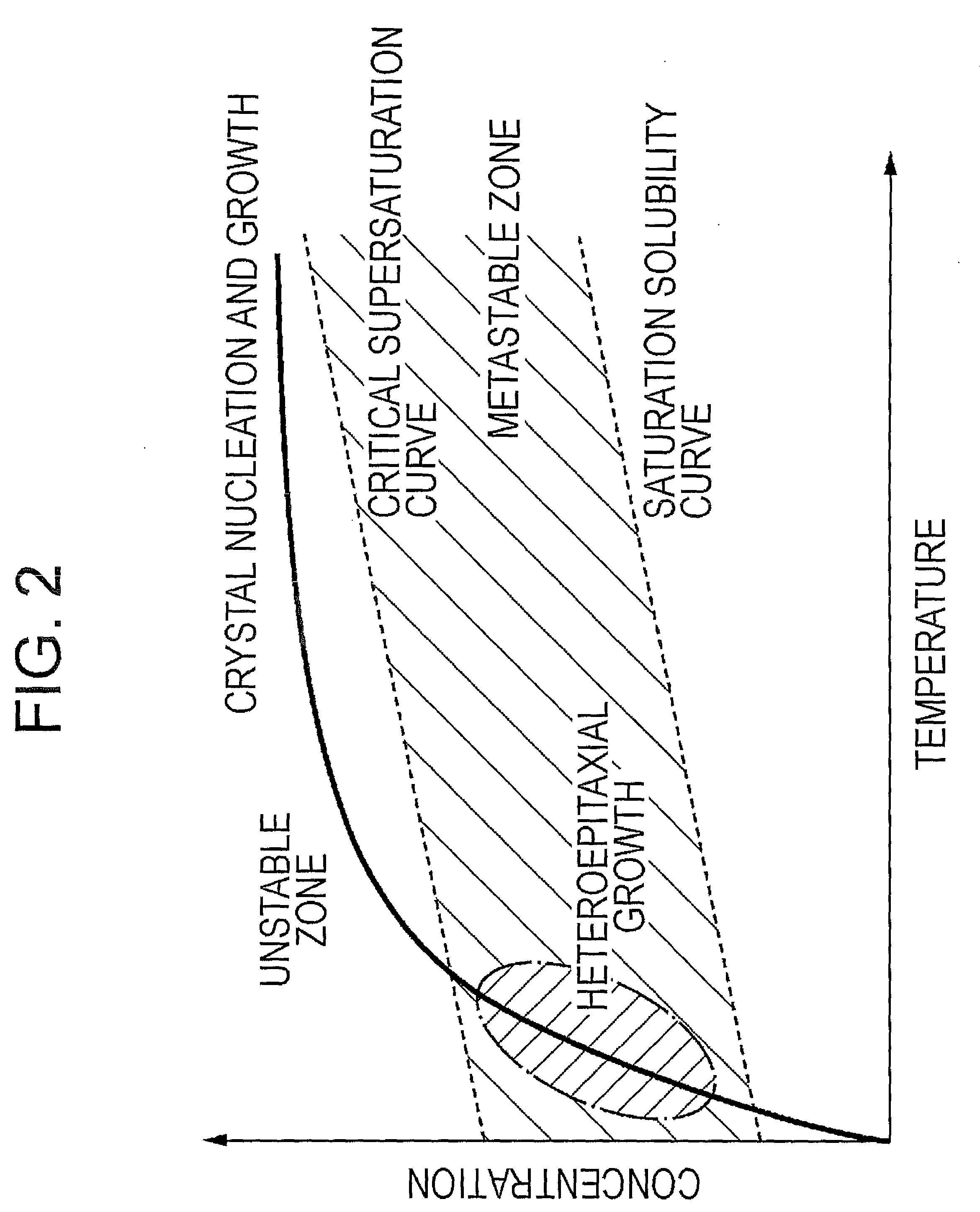Composite piezoelectric ceramic and piezoelectric device
a piezoelectric ceramic and ceramic technology, applied in the field of piezoelectric devices, can solve the problems of inability to obtain sufficient piezoelectric characteristics, material cannot be sintered, composition variations, etc., and achieve the effect of reducing the amount of batio3 and enhancing the dependence of displacement on temperatur
- Summary
- Abstract
- Description
- Claims
- Application Information
AI Technical Summary
Benefits of technology
Problems solved by technology
Method used
Image
Examples
examples 1 to 6
Preparation of KnbO2—Batio2 Composite Piezoelectric Ceramic
[0058]A KNbO3 powder and a TiO2 powder were provided and were dried sufficiently. The powders were weighed so as to obtain a BaTiO3 / MbO3 ratio (after the reaction) described in Table 1, and were added to a fluorine-coated resin container together with zirconia balls (3 mm in diameter). Ethyl alcohol was added, and mixing was performed for 16 hours.
[0059]The slurry of the mixture was separated from the zirconia balls, dried at 80° C., and crushed with a mortar and a pestle. As a binder, polyvinyl butyral (PVB) was added in an amount of 2 wt % relative to the dry powder and was mixed therewith sufficiently. The mixture was classified with a sieve having an opening of 250 μm.
[0060]After the classification, approximately 0.5 g of the powder was weighed and was placed into a mold 10 mm in diameter. With an oil hydraulic press machine, the powder was compacted into a disc under a pressure of 2 ton. The KNbO3—TiO2 disc obtained by ...
examples 7 to 11
[0071]Samples were prepared and evaluated in the same manner as in Examples 1 to 6, except that the KNbO3 powder was replaced by a NaNbO3 powder, that the KNbO3 powder was combined with a NaNbO3 powder, or that the KNbO3 powder was combined with a NaNbO3 powder and a LiNbO3 powder. The results are described in Table 1. All the samples exhibited high piezoelectric characteristics, and the temperature dependency of specific dielectric constant was within 10% in all cases. The presence of BaTiO3 was confirmed by XRD.
PUM
| Property | Measurement | Unit |
|---|---|---|
| Molar ratio | aaaaa | aaaaa |
| Piezoelectricity | aaaaa | aaaaa |
Abstract
Description
Claims
Application Information
 Login to View More
Login to View More - R&D
- Intellectual Property
- Life Sciences
- Materials
- Tech Scout
- Unparalleled Data Quality
- Higher Quality Content
- 60% Fewer Hallucinations
Browse by: Latest US Patents, China's latest patents, Technical Efficacy Thesaurus, Application Domain, Technology Topic, Popular Technical Reports.
© 2025 PatSnap. All rights reserved.Legal|Privacy policy|Modern Slavery Act Transparency Statement|Sitemap|About US| Contact US: help@patsnap.com



